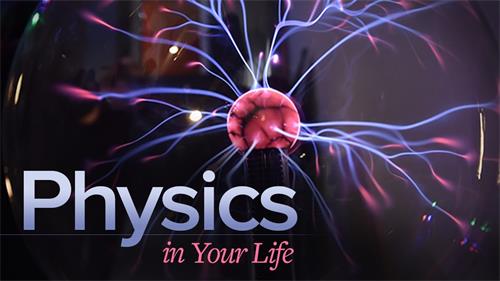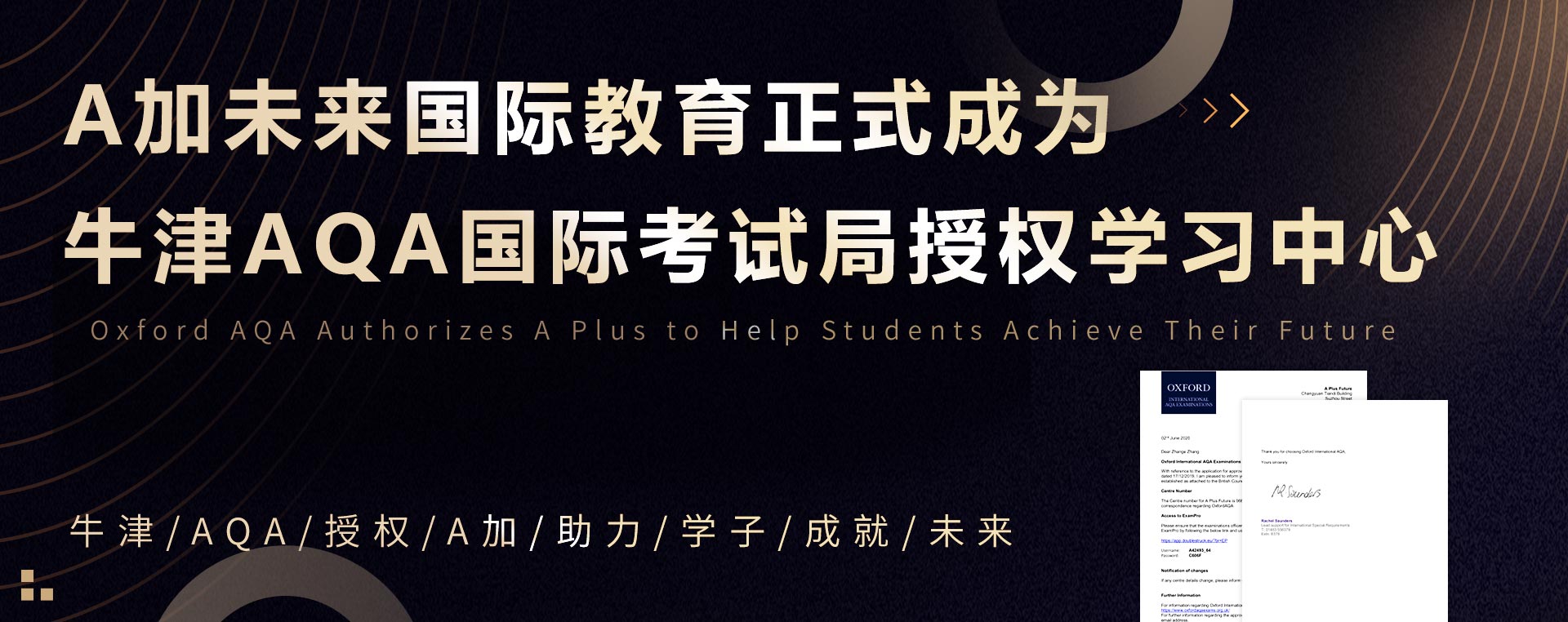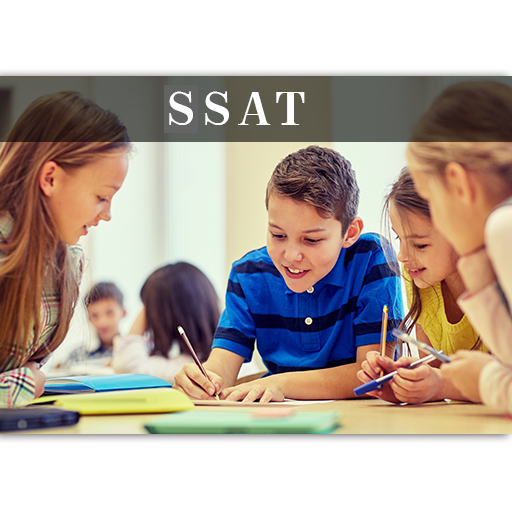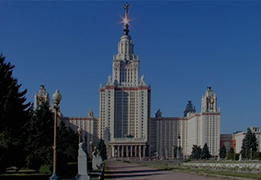各章节重要GCSE物理考点总结,来看看你是不是完全掌握了?
GCSE阶段的物理学习比较基础,更加偏重于对学生的物理知识体系进行一个基本、比较完善构建,因此GCSE物理学习虽然并不难,但要了解的知识点内容是非常丰富的。今天A加未来小编就针对考试中会涉及到的GCSE物理考点进行一次全面的总结,来帮助同学们更好的看展复习和备考工作,一起来了解一下吧!

1.General Physics普通物理
1.1 Length and time长度和时间
1.Use and describe the use of rules and measuring cylinders to determine a length or a volume.使用并且描述如何用尺子和量筒测量长度和体积。
2.Use and describe the use of clocks and devices for measuring an interval of time.
使用并且描述如何用钟表和一些仪器测量时间间隔。
3.Use and describe the use of a mechanical method for the measurement of a small distance.
使用并描述利用机械的方法测量短距离。
4.Measure and describe how to measure a short interval of time(including the period of a pendulum).测量和描述怎样测量一个短时间间隔(包括单摆的周期)。
1.2 Speed,velocity and acceleration速率,速度,加速度
1.Define speed and calculate speed from total distance/total time.
定义速率和计算:速率=总路程/总时间
2.Plot and interpret a speed/time graph or a distance/time graph.
画和解释速率/时间图像或者路程/时间图像
3.Recognize from the shape of a speed/time graph when a body is(a)at rest,(b)moving with constant speed,or(c)moving with changing speed.
从速率/时间图像中辨认出:(a)静止,(b)匀速运动和(c)变速运动。
4.Calculate the area under a speed/time graph to determine the distance traveled for motion with constant acceleration.
计算速率/时间图像中的面积得出匀加速运动的路程。
5.Demonstrate some understanding that acceleration is related to changing speed.
解释加速度和速度的改变量之间的联系。
6.State that the acceleration of free fall for a body near to the Earth is constant.
说明地球表面附近的物体自由降落的加速度是衡定的。
7.Distinguish between speed and velocity.
区分速率和速度。
8.Recognize linear motion for which the acceleration is constant and calculate the acceleration.
认识匀加速的运动并且计算加速度。
9.Recognize motion for which the acceleration is not constant.
认识非匀加速运动。
10.Describe qualitatively the motion of bodies falling in a uniform gravitational field with and without air resistance(including reference to terminal velocity).
定性的描述计和不计空气阻力物体在均匀重力场中下落的运动(包括设计到末速度。
1.3 Mass and weight质量和重量
1.Show familiarity with the idea of the mass of a body.
熟练掌握一个物体的质量的概念。
2.State that weight is a force.
陈述重量是一种力。
3.Demonstrate understanding that weights(and hence masses)may be compared using a balance.
阐明重量(因此质量)可以用天平来比较。
4.Demonstrate an understanding that mass is a property which'resists'change in motion.
阐明质量是物体阻碍加速度的一种性质
5.Describe,and use the concept of,weight as the effect of a gravitational field on a mass.
描述和利用重力是重力场作用在物体上的效果的概念。
1.4 Density密度
1.Describe an experiment to determine the density of a liquid and of a regularly shaped solid and make the necessary calculation.
描述一个测量液体或者规则形状的固体的密度的实验并做必要的计算。
2.Describe the determination of the density of an irregularly shaped solid by the method of displacement and make the necessary calculation.
描述通过替代法测量一个不规则形状的固体的密度并做必要的计算。
1.5 Force力
(a)Effects of forces力的作用效果
1.State that a force may produce a change in size and shape of a body.
说明一个力可以改变一个物体的大小和形状。
2.Plot extension/load graphs and describe the associated experimental procedure.
画伸长量/力的图像并描述这个相关实验过程。
3.Describe the ways in which a force may change the motion of a body.
描述力可以怎样改变一个物体的运动。
4.Find the resultant of two or more forces acting along the same line.
求共线的两个或多个力的合力。
10.Interpret extension/load graphs.
解释伸长量/负荷的图象。
11.State Hooke’s Law and recall and use the expression F=k x.
说明胡克定律并记住使用F=kx。
12.Recognize the significance of the term'limit of proportionality'for an extension/load graph.从伸长量/负荷图像中辨认出正比例限度。
13.Recall and use the relation between force,mass and acceleration(including the direction).
记住和应用力,质量和加速度之间的关系。(F=ma)。
14.Describe,qualitatively,motion in a curved path due to a perpendicular force(F=mv2/r is not required).
定性的描述物体在一个垂直力的作用下沿曲线运动。
(b)Turning effect转动效果
5.Describe the moment of a force as a measure of its turning effect and give everyday examples.描述力矩是力的转动效果量度并且取例子。
6.Describe,qualitatively,the balancing of a beam about a pivot.
定性的描述一个杆关于支点的平衡。
15.Perform and describe an experiment(involving vertical forces)to verify that there is no net moment on a body in equilibrium.
演示和描述一个实验证明物体在合力矩为零时会保持平衡。
16.Apply the idea of opposing moments to simple systems in equilibrium.
应用反向的力矩简化一个系统的平衡。
(c)Conditions for equilibrium平衡的条件
7.State that,when there is no resultant force and no resultant turning effect,a system is in equilibrium.描述当合力为零并且合力矩为零时,系统保持平衡。
(d)Centre of mass质心
8.Perform and describe an experiment to determine the position of the centre of mass of a plane lamina.演示和描述一个在几何平面内找出物体质心的实验。
9.Describe qualitatively the effect of the position of the centre of mass on the stability of simple objects.定性的描述质心的位置对物体稳定的影响。
(e)Scalars and vectors标量和矢量
17.Demonstrate an understanding of the difference between scalars and vectors and give common examples.阐明和理解标量和矢量之间的区别并且提出常见的例子。
18.Add vectors by graphical representation to determine a resultant.
通过图像表示求两个矢量的和。
19.Determine graphically a resultant of two vectors.
通过画图求两个矢量的和
1.6 Energy,work and power能量,功和功率
(a)Energy能量
1.Demonstrate an understanding that an object may have energy due to its motion or its position,and that energy may be transferred and stored.
描述和理解一个物体由于运动和位置产生的能量,这个能量能够被转换和储存。
2.Give examples of energy in different forms,including kinetic,gravitational,chemical,strain,nuclear,internal,electrical,light and sound.
给一些不同形式的能量的例子,包括动能,势能,化学能,弹性势能,核能,内能,电能,光能和声能,
3.Give examples of the conversion of energy from one form to another and of its transfer from on place to another.
给一些从一种形式的能量转换为另一种形式的能量,从一个地方传播到另一个地方。
4.Apply the principle of energy conservation to simple examples
应用能量守恒的简单的例子。
8.Recall and use the expressions k.e.=½mv2 and p.e.=mgh
记住和应用表达式K.e=1/2mv和p.e=mgh
(b)Energy resources能源
5.Describe how electricity or other useful forms of energy may be obtained from
(i)chemical energy stored in fuel
(ii)water,including the energy stored in waves,in tides,and in water behind hydroelectric dams
(iii)geothermal resources
(iv)nuclear fission
(v)heat and light from the Sun
描述电能和其它有用的能量形式怎样从下列能源获得的:
(i)储存在然连中的化学能。
(ii)水包括储存在波和潮汐中的能量和水力电气水坝后面的水里面的重力势能
(iii)地热能
(iv)核裂变
(v)来自太阳的热和光能
9.Show an understanding that energy is released by nuclear fusion in the Sun.
描述和理解太阳的核裂变释放能量
10.Show a qualitative understanding of efficiency定性的理解效率
(c)Work功
4-relate,without calculation,work done to the magnitude of a force and the distance moved不通过计算找出做功与力的大小和移动的路程之间的关系
5-describe energy changes in terms of work done
描述能量的改变就是做功
6-recall and useΔW=Fd=ΔE记住和应用
(d)Power功率
1-relate,without calculation,power to work done and time taken,using appropriate examples不用计算用合适的例子找出功率与做功和时间的关系
2-recall and use the equation P=E/t in simple systems
记住和应用在一个简单的系统P=E/t
1.7 Pressure压强
1-relate,without calculation,pressure to force and area,using appropriate examples
不通过计算,通过合适的例子得出压强,力和面积之间的联系
2-describe the simple mercury barometer and its use in measuring atmospheric pressure描述简单的水银气压计和用它来测量大气压强
3-relate,without calculation,the pressure beneath a liquid surface to depth and to density,using appropriate examples
不通过计算通过合适的例子得出液体表面下的压强,升读和密度之间的关系
4-use and describe the use of a manometer描述压力计的应用
5recall and use the equation p=F/A记住,会用等式P=F/A
6-recall and use the equation p=hρg记住会用等式p=pgh
2.Thermal Physics热学物理
2.1 Simple kinetic molecular model of matter物质简单分子动能模型
(a)States of matter物质的状态
1-state the distinguishing properties of solids,liquids and gases
描述固体,液体,气体性质的区别
(b)Molecular model分子模型
1-describe qualitatively the molecular structure of solids,liquids and gases
定性的描述固体,液体,气体的分子结构
2-interpret the temperature of a gas in terms of the motion of its molecules
以分子运动来描述气体的温度
3-describe qualitatively the pressure of a gas in terms of the motion of its molecules
以分子运动来定性的描述气体的压强。
4-describe qualitatively the effect of a change of temperature on the pressure of a gas at constant volume
定性的描述体积不变时温度的变化对压强的影响。
5-show an understanding of the random motion of particles in a suspension as evidence for the kinetic molecular model of matter
解释和理解粒子的随机运动是分子动力学模型的一个实例
6-describe this motion(sometimes known as Brownian motion)in terms of random molecular bombardment
用分子的随机碰撞来描述一种运动(布朗运动)
7-relate the properties of solids,liquids and gases to the forces and distances between molecules and to the motion of the molecules
联系固体,液体,气体的性质与分子间力,分子间距离和分子的运动
8-show an appreciation that massive particles may be moved by light,fast moving molecules展示一定质量的粒子被光照后移动,并且移动加快。
(c)Evaporation蒸发
1-describe evaporation in terms of the escape of more-energetic molecules from the surface of a liquid
以高能量的分子从液体表面逃离的方式描述蒸发。
2-relate evaporation and the consequent cooling
联系蒸发和冷却结果
3-demonstrate an understanding of how temperature,surface area and wind over a surface influence evaporation
描述理解温度,表面积和表面的气流对蒸发的影响。
(d)Pressure changes改变压强
1-relate the change in volume of a gas to change in pressure applied to the gas at constant temperature
联系温度不变时,体积的改变引起压强的改变。
2-recall and use the equation pV=constant at constant temperature
记住和应用当温度不变时等式,PV=常数
2.2 Thermal properties热性质
(a)Thermal expansion of solids,liquids and gases
固体,液体和气体的热膨胀。
1-describe qualitatively the thermal expansion of solids,liquids and gases
定性的描述固体,液体和气体的热膨胀。
2-identify and explain some of the everyday applications and consequences of thermal expansion
描述和解释一些生活中热膨胀的实例
3-describe qualitatively the effect of a change of temperature on the volume of a gas at constant pressure mention
定性的描述提到的压强一定时,温度对气体的影响。
4-show an appreciation of the relative order of magnitude of the expansion of solids,liquids and gases说明并展现固体、液体、气体之间膨胀的关系
(b)Measurement of Temperature温度的测量
1-appreciate how a physical property which varies with temperature may be used for the measurement of temperature and state examples of such properties
赏识一下变化温度的物理性质被用来测量温度并描述一个类似的例子
2-recogize the need for and identify fixed Points
识别和辨认所需要的固定点
3-describe the structure and action of liquid in glass thermometers
描述一个液体温度计的结构和作用
4-demonstrate understanding of sensitivity,range and linearity
说明和理解灵敏度,变化范围和线性
5-describe the structure of a thermocouple and show understanding of its use for measuring high temperatures and those which vary rapidly
描述热偶的结构和理解用它来测量迅速变化的高温
(c)Thermal capacity热容量
1-relate a rise in temperature of a body to an increase in internal energy
描述一个物体的温度升高内能增加。
2-show an understanding of the term thermal capacity理解说明热容量
3-describe an experiment to measure the specific heat capacity of a substance
描述一个实验测量一个物体的比热容量。
(d)Melting and boiling熔化和沸腾
1-describe melting and boiling in terms of energy input without a change in temperature
温度不变时用吸收的能量描述融化和沸腾
2-state the meaning of melting point and boiling point描述熔点和沸点的意义
3-describe condensation and solidification描述液化和凝固
4-distinguish between boiling and evaporation区分沸腾和蒸发
5-use the terms latent heat of vaporization and latent heat of fusion and give a molecular interpretation of latent heat
用蒸发潜热和熔化潜热和给定的分子解释潜热。
6-describe an experiment to measure specific latent heats for steam and for ice
描述一个测量水流和冰的浅比热。
2.3 Transfer of thermal energy热能的传递
(a)Conduction传导
1-describe experiments to demonstrate the properties of good and bad conductors of heat
描述一个热导体性能好坏的实验。
2-give a simple molecular account of heat transfer in solids
给出在固体中一个简单分子热能的转移。
(b)Convection对流
1-relate convection in fluids to density changes and describe experiments to illustrate convection
液体密度的改变和转换的关系,描述一个实验解释转换。
(c)Radiation辐射
1-identify infra-red radiation as part of the electromagnetic spectrum
辨认红外辐射是电磁光谱的一部分。
2-describe experiments to show the properties of good and bad emitters and good and bad absorbers of infra-red radiation
描述一些实验证明红外辐射好的和坏的释放者和吸收者。
(d)Consequences of energy transfer能量转移的结果
1-identify and explain some of the everyday applications and consequences of conduction,convection and radiation
辨认和解释生活中传导,转换和辐射的应用和结果。
3.Properties of waves,including light and sound波的性质包括光和声
3.1 General wave properties普通波的性质
1-describe what is meant by wave motion as illustrated by vibration in ropes,springs and by experiments using water waves
通过用波动的意义解释绳子,弹簧和水波的振动试验
2-use the term wavefront用波振面
3-give the meaning of speed,frequency,wavelength and amplitude
给出速率,频率,波长和幅度的意义。
4-recall and use the equation v=fλ
记住和应用等式速率=平率×时间
5-distinguish between transverse and longitudinal waves and give suitable examples
区分横波和纵波并且举出合适的例子。
6-describe the use of water waves to show用水波描述
(i)reflection at a plane surface平面反射
(ii)refraction due to a change of speed折射由于速率的改变。
(iii)diffraction produced by wide and narrow gaps
通过宽的或窄的缝隙产生衍射。
7-interpret reflection,refraction and diffraction using wave theory
用波的理论解释反射,折射和衍射。
3.2 Light光
(a)Reflection of light光的反射
1-describe the formation,and give the characteristics,of an optical image by a plane mirror
描述形成,给出特点在平面镜中呈现的光学图像。
2-use the law angle of incidence=angle of reflection会用入射角等于反射角
3-perform simple constructions,measurements and calculations
演示简单的结构测量和计算。
(b)Refraction of light光的衍射
1-describe an experimental demonstration of the refraction of light
描述一个实验解释光的衍射现象。
2-use the terminology for the angle of incidence i and angle of refraction r and describe the passage of light through parallel-sided transparent material
会用术语入射角i折射角r并且描述光通过两个透明的平行板。
3-give the meaning of critical angle
给出一些重要角度的意义。
4-describe internal and total internal reflection
描述内部的和总的反射
5-recall and use the definition of refractive n in terms of speed
记住和应用以速度定义折射率n.
6-recall and use the equation sin i/sin r=n记住和应用等式sin i/sin r=n
7-describe the action of optical fibres描述纤维光学的作用。
(c)Thin converging lens薄的汇聚透镜
1-describe the action of a thin converging lens on a beam of light
描述薄聚焦透镜对一束光的作用。
2-use the term principal focus and focal length
会用主焦点和焦距。
3-draw ray diagrams to illustrate the formation of a real image by a single lens
用光线图来解释通过单镜头形成的实相。
4-draw ray diagrams to illustrate the formation of a virtual image by a single lens
画光线图来解释通过单镜头形成的虚像。
5-use and describe the use of a single lens as a magnifying glass
用和描述利用一个单镜头作为一个放大镜。
(d)Dispersion of light光的分散
1-give a qualitative account of the dispersion of light as illustrated by the action on light of a glass prism
定性的分析当光通过棱镜分散的行为
(e)Electromagnetic spectrum电磁波谱
1-describe the main features of the electromagnetic spectrum and state that all e.m.waves travel with the same high speed in vacuo
描述电磁波的主要特点和描述所有的波以同样的速度在真空中传播。
2-state the approximate value of the speed of electro-magnetic waves
描述电磁波速度值。
3-use the term monochromatic
用单一的一色的。
3.3 Sound声音
1-describe the production of sound by vibrating sources
描述声音是由振动产生。
2-describe the longitudinal nature of sound waves
描述声音的纵向特性。
3-state the approximate range of audible frequencies
描述可听得见波的大概频率。
4-show an understanding that a medium is required in order to transmit sound waves
展示和理解声音的传播需要介质。
5-describe an experiment to determine the speed of sound in air
描述一个测量声音在空气中传播的速度。
6-relate the loudness and pitch of sound waves to amplitude and frequency
声波的响度和音调与振幅和频率之间的关系。
7-describe how the reflection of sound may produce an echo
描述声音的反射产生回声。
8-describe compression and rarefaction
描述压缩和稀疏
9-state the order of magnitude of the speed of sound in air,liquids and solids
描述液体和固体在空气中传播速率大小的顺序。
4.Electricity and magnetism电和磁
4.1 Simple phenomena of magnetism简单的磁现象
1-state the properties of magnets
描述磁体的性质。
2-give an account of induced magnetism
说明感生磁性
3-distinguish between ferrous and nonferrous materials
区分含铁和不含铁的材料。
4-describe methods of magnetisation and of demagnetisation
描述磁化和消除磁性的方法。
5-describe an experiment to identify the pattern of field lines round a bar magnet
描述一个实验来辨认一个条形磁铁周围的场线图案。
6-distinguish between the magnetic properties of iron and steel
区分铁和钢的磁性。
7-distinguish between the design and use of permanent magnets and electromagnets
区分和设计永久磁体和电磁体。
4.2 Electrical quantities电学物理量
(a)Electric charge电荷
1-describe simple experiments to show the production and detection of electrostatic charges描述一个简单的实验证明静电荷的产生和发现
2-state that there are positive and negative charges
描述存在正电荷和负电荷。
3-state that unlike charges attract and that like charges repel
描述同种电荷排斥,异种电荷吸引。
4-describe an electric field as a region in which an electric charge experiences a force
描述电场是一个电荷受力的区域
5-distinguish between electrical conductors and insulators and give typical examples
区分导体和绝缘体并给出典型的例子。
6-state that charge is measured in coulombs
描述电荷由库伦来测量。
7-state the direction of lines of force and describe simple field patterns,including the field around a point charge and the field between two parallel plates
描述力的方向和简单的场的图案,包括点电荷周围的场和两个平行板之间的场。
8-give an account of charging by induction
9-recall and use the simple electron model to distinguish between conductors and insulators
记住和应用简单的电子模型区分导体和绝缘体。
(b)Current电流
1-state that current is related to the flow of charge
描述电流和流动电荷的关系。
2-use and describe the use of an ammeter
用和描述电流表的用法。
3-show understanding that a current is a rate of flow of charge and recall and use the equation l=Q/t理解电流是流动电荷的变化率,记住何用等式I=Q/t
4-distinguish between the direction of flow of electrons and conventional current
区分电子的流动方向和传统电流的方向。
(c)Electro-motive force电动势
5-state that the e.m.f.of a source of electrical energy is measured in volts
描述一个电能源的电动势用伏特测量。
6-show understanding that e.m.f.is defined in terms of energy supplied by a source in driving charge round a complete circuit
理解电动势被定义为能源提供的能量迫使电荷环绕整个电路。
(d)Potential difference电势差
1-state that the potential difference across a circuit component is measured in volts
描述通过一个电路元件的电势差用伏特测量。
2-use and describe the use of a voltmeter
用和描述电压表的用法。
(e)Resistance电阻
1-state that resistance=p.d./current and understand qualitatively how changes in p.d.or resistance affect current
描述电阻=电势差/电流并且理解怎样改变电势差和电阻影响电流。
2-recall and use the equation R=V/I记住和用等式R=V/I
3-describe an experiment to determine resistance using a voltmeter and an Ammeter
描述一个实验用电压表和电流表测电阻值。
4-relate(without calculation)the resistance of a wire to its length and to its diameter
不通过计算联系一个导线的电阻值与他的长度,直径的关系。
5-recall and use quantitatively the proportionality between resistance and the length and the inverse proportionality between resistance and cross-sectional area of a wire
记住和定性的用电阻和长度成正比和面积成反比。
(f)Electrical energy电能
1-recall and use the equations P=I V and E=I V t
记住&用等式P=I*V和E=I*V*t
4.3 Electric circuits电路
(a)Circuit diagrams电路
(b)Series and parallel circuits串联和并联
1-draw and interpret circuit diagrams containing sources,switches,resistors(fixed and variable),lamps,ammeters voltmeters,magnetising coils,transformers,bells,fuses and relays画和解释电路图包括电源,开关,电阻器(固定的和变化的)灯泡,电流表,电压表,电磁圈,转换器,电铃,保险丝和延迟.
2-understand that the current at every point in a series circuit is the same
理解串联电路中每一点电流相等.
3-give the combined resistance of two or more resistors in series
给出个电阻串联的总电阻.
4-state that,for a parallel circuit,the current from the source is larger than the current in each branch
描述,对于一个并联电路电源的总电流总是大于每一个之路的电流.
5-draw and interpret circuit diagrams containing diodes and transistors
画和解释电路图包括二极管和晶体三极管.
6-recall and use the fact that the sum of the p.d.’s across the components in a series circuit is equal to the total p.d.across the supply
记住和应用串联电路中各用电器电势差之和等于总的电源电势差.
7-recall and use the fact that the current from the source is the sum of the currents in the separate branches of a parallel circuit
记住和应用并联电路电源的总电流等于各个支路电流之和.
(c)Action and use of circuit components作用和用电路元件
(d)Digital electronics数字电子学
1-state that the combined resistance of two resistors in parallel is less than that of either resistor by itself
描述两个电阻并联的合电阻大于其中的任意一个电阻.
2-state the advantages of connecting lamps in parallel in a lighting circuit
说明照明电路中并联灯泡的优点.
3-describe the action of a variable potential divider(potentiometer)
描述分压器的作用.
4-describe the action of thermistors and light dependent resistors and show
understanding of their use as input transducers
描述热敏电阻和光敏电阻的作用并且理解它们作为输入导体的作用.
5-describe the action of a capacitor as an energy store and show understanding of its use in time delay circuits
描述电容作为能量储存的作用和理解它在延迟电路中的作用.
6-describe the action of a relay and show understanding of its use in switching circuits
描述延迟的作用和理解它在开关电路中的作用.
7-calculate the effective resistance of two resistors in parallel
计算两个电阻并联的有效电阻.
8-describe the action of a diode and show understanding of its use as a rectifier
描述二极管的作用和说明理解它作为一个校正器的作用.
9-describe the action of a transistor as an electrically operated switch and show understanding of its use in switching circuits
描述晶体三极管作为操作开关的作用和理解它在开关电路中的作用。
10-recognize and show understanding of circuits operating as light sensitive
switches and temperature operated alarms(using a relay or a transistor)
辨认和理解灯控和温度控制开关电路(用延迟和电晶体)
11-explain and use the terms digital and analogue
解释和用数字和模拟量
12 state that logic gates are circuits containing transistors and other Components
说明逻辑门电路包括晶体三极管和其它元件.
13-describe the action of NOT,AND,OR,NAND and NOR gates
描述非,与,或,与非和或非门.
14-design and understand simple digital circuits combining several logic gates
设计和理解几个逻辑门的复合电路。
15-state and use the symbols for logic gates(the American ANSI#Y 32.14 symbols will be used)
描述和用逻辑门的符号。
4.4 Dangers of electricity电的危害
1-state the hazards of描述这些危害
(i)damaged insulation绝缘层损坏
(ii)overheating of cables电缆的温度过高
(iii)damp conditions衰减(阻尼)条件
2-show an understanding of the use of fuses and circuit-breakers
描述和理解保险丝和断路器的作用。
4.5 Electromagnetic effects电磁效果
(a)Electromagnetic induction电磁感应
3-describe an experiment which shows that a changing magnetic field can induce an e.m.f.in a circuit
描述一个实验可以改变磁场产生感应电动势在电路中。
4-state the factors affecting the magnitude of an induced e.m.f.
说明影响电动势大小的因素。
5-show understanding that the direction of an induced e.m.f.opposes the change causing it
说明感应电动势的方向和与改变方向相反。
(b)a.c.generator交流发电机
1-describe a rotating-coil generator and the use of slip rings
描述一个转动线圈发电机和用集电环。
2-sketch a graph of voltage output against time for a simple a.c.generator
画出一个简单的交流发电机输出电压-时间图像。
(c)Transformer变压器
1-describe the construction of a basic iron cored transformer as used for voltage transformations描述一个碱性铁心变压器的结构用来转换电压。
2-recall and use the equation(Vp/Vs)=(Np/Ns)
记住和用等式(Vp/Vs=Np/Ns)
3-describe the principle of operation of a transformer
描述变压器的工作原理
4-recall and use the equation Vp lp=Vs Is(for 100%efficiency)
记住和用等式VpIp=VsIs
(d)The magnetic effect of a current电流的磁效应
1-describe the use of the transformer in high-voltage transmission of electricity
描述和用高电压变压器传送电。
2-give the advantages of high voltage transmission给出高电压传送的优点。
3-describe the pattern of the magnetic field due to currents in straight wires and in solenoids描述指导线电流和螺线圈磁场的模型。
4-describe applications of the magnetic effect of current,including the action of a relay
描述电磁相互作用的应用,包括传送的作用。
5-explain why energy losses in cables are lower when the voltage is high
描述为什么当电压很高时电缆中能量会损失。
6-state the qualitative variation of the strength of the magnetic field over salient parts of the pattern定性的描述磁场强度会变化通过比较突出的模型。
7-describe the effect on the magnetic field of changing the magnitude and direction of the current描述电流的大小和方向变化对磁场的影响。
(e)Force on a current carrying conductor载流导体上的力
1-describe an experiment to show that a force acts on a current-carrying conductor in a magnetic field,including the effect of reversing:(i)the current(ii)the direction of the field
描述一个实验说明在磁场中作用在载流导体的力,包括改变(i)电流(ii)磁场的方向
2-describe an experiment to show the corresponding force on beams of charged particles
描述一个实验说明一束带电粒子所受力。
3-state and use the relative directions of force,field and current
说明力的方向,场的方向和电流的方向的关系。
(f)d.c.motor直流电动机
1-state that a current-carrying coil in a magnetic field experiences a turning effect and that the effect is increased by increasing the number of turns on the coil
描述带电线圈在磁场中的转动效果和线圈匝数增多对其转动的影响。
2-relate this turning effect to the action of an electric motor
联系转动效果和电动机的作用。
3-describe the effect of increasing the current
描述影响电流增加的因素。
4.6 Cathode ray oscilloscopes阴极射线示波器
(a)Cathode rays阴极射线
1-describe the production and detection of cathode rays
描述阴极射线的产生和发现。
2-describe their deflection in electric fields
描述阴极射线在电场中的偏转
3-state that the particles emitted in thermionic emission are electrons
描述在热电子发射的粒子是电子。
(b)Simple treatment of cathode-ray oscilloscope
论及简单的阴极射线示波器。
1-describe in outline the basic structure an action of a cathode-ray oscilloscope(detailed circuits are not required)
扼要的描述阴极射线示波器的基本结构。
2-use and describe the use of a cathode-ray oscilloscope to display waveforms
用和描述用阴极示波器展示波形。
5.Atomic Physics原子学物理
5.1 Radioactivity放射
(a)Detection of radioactivity放射性的发现
1-show awareness of the existence of background radiation
说明背景辐射存在的意识。
2-describe the detection ofα-particles,β-particles andγ-rays(β+is not included:β-particles will be taken to refer toβ-.)
描述α粒子β粒子γ射线的发现
(b)Characteristics of the three kinds of emission三种射线的性质
1-state that radioactive emissions occur randomly over space and time
描述放射性的辐射在时间和空间的随机行
2-state,for radioactive emissions:
(i)their nature
(ii)their relative ionising effects
(iii)their relative penetrating abilities
描述放射性的辐射(i)它们的类型(ii)他们的相对电离效应
(iii)相对灵敏能力
3-describe their deflection in electric fields and magnetic fields
描述他们在电场和磁场中的偏转。
4-interpret their relative ionising effects解释他们相对的电离效应。
(c)Radioactive decay放射性衰变
1-state the meaning of radioactive decay,using equations(involving words or symbols)to represent changes in the composition of the nucleus when particles are emitted
描述放射性衰变的意义,用等式表示当粒子被释放的时候原子核结构的变化。
(d)Half-life半衰期
1-use the term half-life in simple calculations which might involve information in tables or decay curves用表格的信息或衰变曲线简单的计算半衰期。
(e)Safety precautions安全预防措施
1-describe how radioactive materials are handled,used and stored in a safe way
描述辐射性材料怎样危险,安全的使用和储存。
5.2 The nuclear atom核型原子
(a)Atomic model原子模型
1-describe the structure of an atom in terms of a nucleus and electrons
用原子核和核外电子描述原子的结构。
2-describe how the scattering ofα-particles by thin metal foils provides evidence for the nuclear atom描述α粒子通过金属箔的散射提供了核型原子的证据
(b)Nucleus原子核
1-describe the composition of the nucleus in terms of protons and neutrons
描述原子核由质子和中子构成
2-use the term proton number Z用质子数Z
3-use the term nucleon number A用核子数A
4-use the term nuclide and use the nuclide notation
用核素和用核素符号
(c)Isotopes同位素
1-use the term isotope长期使用同位素
2-give and explain examples of practical applications of isotopes给出并解释同位素应用的实例。
以上就是A加未来小编关于GCSE物理考点的总结,同学们可以以本文为参考,更好地开展物理课程的复习和考试准备。如果学习中还有什么疑问,欢迎随时咨询我们哟!
 喜欢 [0]
喜欢 [0] 相关推荐

- GCSE心理考试这么写
知识点 2021-02-18

- GCSE英语考试考不好?
知识点 2021-02-18

- GCSE成绩不满意可以重审吗?一定要重考吗?
知识点 2021-02-18

- 申请英国大学必须要用gcse吗
知识点 2021-12-16











